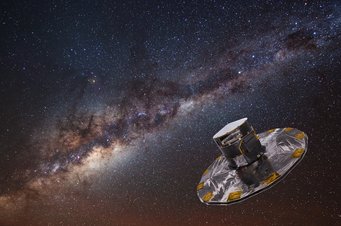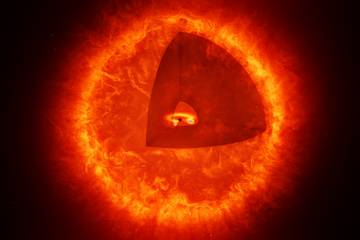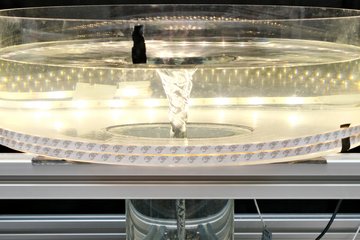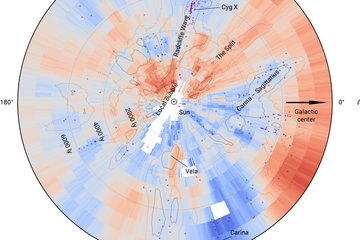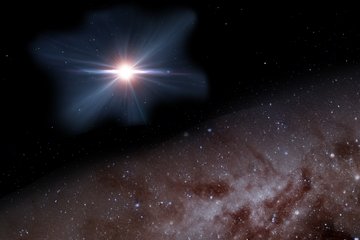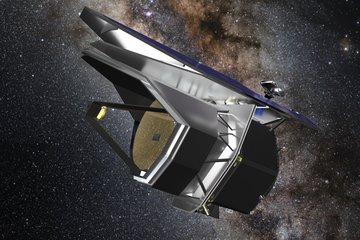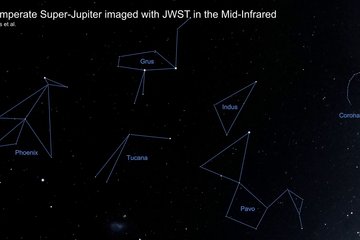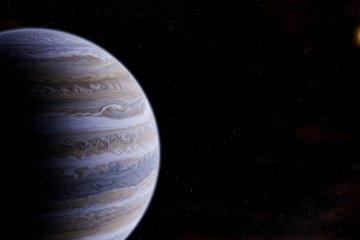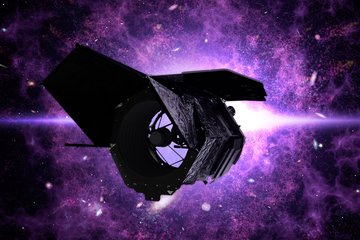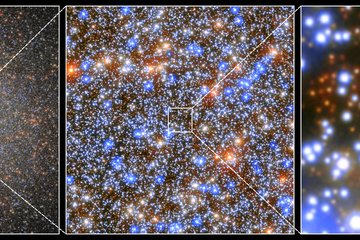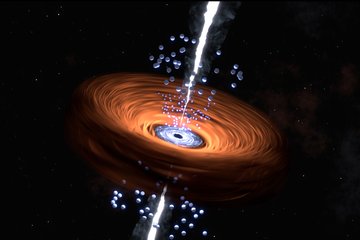Publication of a new huge data set of the Gaia mission
In 2013, the Gaia Astrometry Observatory was launched, one of the most important missions in observational space-based astronomy. On December 3, 2020, the first part of the third Gaia data set (Early Data Release 3, EDR3) will be published with measurements of approximately 1.8 billion celestial objects.

The main goal of the Gaia Space Telescope is the high-precision astrometric, photometric and spectroscopic measurement of well over one billion stars of our home galaxy, the Milky Way - a data set that surpasses everything that has been done so far on this subject in quantity and quality by orders of magnitude and will be the standard for decades to come for studying the dynamics and structure of our Milky Way system. But the Gaia data are also of great relevance to almost all other areas of astrophysics, as they also contain information from millions of asteroids or comets, thousands of exoplanets or supernovae, or even hundreds of thousands of distant galaxies and quasars.
Like other major scientific projects of the European Space Agency ESA, the Gaia mission is an interaction of many important partners and participants. On the German side, these are the Astronomisches Recheninstitut (ARI) at the Center for Astronomy at the University of Heidelberg (ZAH), the Lohrmann Observatory at the Technical University of Dresden (TUD), the Leibniz Institute for Astrophysics in Potsdam (AIP), the German Aerospace Center (DLR) and our institute, the Max Planck Institute for Astronomy (MPIA) in Heidelberg.
The Data Processing and Analysis Consortium (DPAC) is mainly responsible for the scientific data processing on the mission. The MPIA-Gaia group around Coryn-Bailer-Jones is part of DPAC and plays a central role in the development of algorithms for object classification, for the analysis of the physical parameters of stars and for the general handling of such huge data sets.
DLR is planning an online event with six Gaia experts - including Coryn Bailer-Jones from MPIA - starting at 11:00 a.m. for the publication of the latest data set on December 3, 2020 at 12:00 p.m. CET.
A livestream is planned on DLR's YouTube channel
https://youtu.be/dxM6d5LYlpI for the general public and another livestream especially for the media at https://event.dlr.de/gaia-edr3/.
Further information about this event, which is only one of several Europe-wide events (but the only one in German language) can be found at
Facebook: https://www.facebook.com/DLRde
Twitter: https://twitter.com/DLR_de
YouTube: https://www.youtube.com/dlrde
Instagram: https://www.instagram.com/germanaerospacecenter/
You can also find an interesting article about Gaia at
https://www.mpg.de/14148873/W002_Physics_Astronomy_050_057.pdf
KJ
